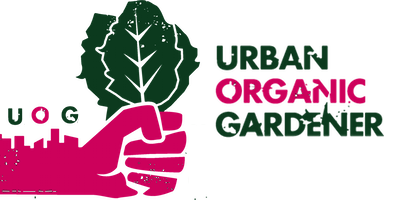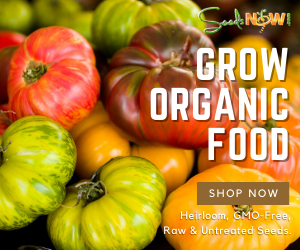Up until this point I’ve been pretty lucky with the pest problems in either of my gardens. The fire escape garden has a built in defense from pests being on the fourth floor. My backyard vegetable garden doesn’t have that luxury. Back in June there were some small signs of pest problems, but nothing horrible. The containers seemed to be a pest deterrent. I’ve since expanded to more than containers though to cinder block gardening and during my final fall planting used traditional pots. The pests seem to be much more...
You Are Browsing ‘Self Watering Containers’ Category
I finally found a way not only to use phone books, but to use them in your container garden. Since fall has quickly arrived, the weather’s dropped. I’ve been planning to build a hothouse, but don’t think that the weather has dropped to that point yet. As a first step to building one on my fire escape garden, I knew that I wanted to raise the containers off of the cold metal. The initial plan was to fold up cardboard boxes and place them under the containers. That plan changed when I went running the other day. As I...
I’m still figuring out what to do with my cucumber plants because the leaves are yellowing. It’s just over a month since I moved my cucumber plant across the yard. The plant was moved for a few reasons. First being that it was outgrowing the trellis that I built for it and needed more support, so I moved it close to the fence to train it up. The second being that the leaves were yellowing, which I thought was due to sun exposure. The plant is growing along the fence, still bearing fruit and blooming. That’s nice, but...
Now that I have my final fall planting done in my backyard vegetable garden, I’m starting to look back and evaluate my first season of gardening. As I look at my garden, I ask myself…why did I grow radicchio? I can’t complain about the way that it’s growing and would definitely recommend it, which is more than I can say for cauliflower. The problem is that I just haven’t used it at all. So what’s the point of growing something if I’m not going to use it. It’s not that impressive for me to...
With the fall season upon us, I can look back at my initial May planting and say that I’m most disappointed in the cauliflower plant. Of all the plants, it’s the one that has done the least. It’s pretty much done nothing. A few weeks ago, I also said that I wouldn’t recommend growing red peppers in small spaces, but was proven wrong when they started to bloom again. At least that I got some peppers out of those plants though. With the cauliflower, I’ve gotten nothing. Here’s my thoughts on what could...
There’s a lot out there on the importance of testing the pH balance of your soil in order to grow healthy vegetables. I wasn’t interested in buying some fancy pH test kit or something like that. CleanAirGardening had a post a few weeks ago titled, “Dare you taste your soil?” It was about how they used to test the pH levels of their soil back in the day – by tasting it. I took it as a personal challenge and test tasted my soil. No, I didn’t taste the soil of the cherry tomatoes that I urinated on. The...
I’m back “home” in Philly this week visiting friends that I haven’t seen in a while. My old roommate and I got to talking about the gardening thing. He dropped a comment saying that I should read some books on gardening and stop with all the experimentation. If I were to do that, then I’d still be reading books, get overwhelmed with unnecessary info and likely get frustrated and just give up. Which is I’m sure has happened to some of you if you’ve even gotten that far. What did people do hundreds...
The lettuce in my self watering containers have bolted. I needed to figure out how to remove them from the containers, so I can plant another round of vegetables. I’ve read of two different ways of removing the bolted plants. The first is to remove the plant from the root. The other is to cut the plant at the soil line. To find out which way was better, I decided to do both to see the results. In the containers that there were no other plants, I pulled them from the roots. The containers that contained other plants, I cut at the...
It’s been a few weeks since I planted my cucumber plant. It was starting to grow outside of the container, which is a good thing (at least it ain’t dying). So I built a cucumber trellis for it using mostly recycled materials. Tools and materials: Old poles put out by someone for garbage. You can use anything that is sturdy enough and stands upright such as tree branches, old crutches or broom sticks. Strong tape to tape the poles to the container. String to tie around the poles and make the trellis. Scissors Steps to...
Once your lettuce grows to be about 4-6 inches, you can safely harvest it and it will grow back again. To harvest, simply place your thumb and pointer fingers about 2 inches above the soil and snap off the leaf. Place in your harvesting basket and continue. It’ll likely take a week or so for your crop to grow again for another harvest. httpv://www.youtube.com/watch?v=ntTwPXQUFm8 ...
I needed to transplant my celery into a new self watering container because the telephone pole in my Grandmother’s neighbor’s backyard rotted and crashed into her backyard. Luckily, nobody was hurt. Can’t say the same for my celery container. When the pole fell, it hit the pipe, which in turn cracked the reservoir. I used duct tape to patch up the hole because duct tape fixes everything. It’s a myth, don’t believe the hype. The container was still leaking. Thankfully, I still had some green tubs left over...
Over the past few weeks, I’ve been showering my lettuce plants with love because they’ve been producing the most. Nearly forgot that I had peppers and tomatoes planted on my fire escape as well. Luckily for me, they didn’t hold it against me and are starting to produce. There is a small sweet Italian pepper that has formed and is doing it’s thing (whatever it’s called) with lots of flowering going on. My cherry tomato plant is also blooming (I’ll use different phrases until I find out what the proper...
After not checking in for a week, I was bit nervous in checking in on my vegetable garden in Brooklyn. Luckily with the ridiculous amounts of rain that we’ve been getting, things looked good, but some of the containers showed signs of pest problems. The first problem that I noticed was on the collard greens. Some of the leaves on the left side were a bit chewed through. Most of the bigger leaves were untouched. I didn’t notice any pests on them while I was there. At this point, I’m not seeing this as a huge problem, but...
Last month, I read the book Plenty. There was a passage in it about “food traceability” and how our food travels on the average 1,500 to 2,000 miles from farm to plate. That has stuck with me, well because that number is insane. Besides the distance that it traveled, what about what else went into getting that food to me. How was it treated? Who are the people that worked to get it to me? How were they treated? Even though I didn’t start from seed, I can tell you that I got the planter from Trina at Silver Heights Farm,...
After being away for six days, I was shocked when I returned to see the growth of the lettuces in my containers. It was definitely time for my first harvest. Most of the leaves were at least 6 inches and didn’t want them to get much larger. This brings me one step closer to my goal of getting one salad. Didn’t turn this into a salad because I had already eaten dinner. Made this post abbreviated because still playing catch up from being away. I definitely wanted to get something posted though as it’s pretty damned exciting...
We’ve been through how to build a self watering container, talked about what kind of potting soil to use and how to make it. Now I am going to tell (and show) you how to water them and how to tell it’s filled: On my fire escape garden, I use a funnel and an empty juice bottle. In my Brooklyn garden, I use a hose. Fill with water (not Kool-Aid) through the pipe. Once the reservoir is filled, it will start to come out of the overflow hole that was drilled into the side. httpv://www.youtube.com/watch?v=cDpaMI6NEIQ ...
In a previous post, I explained the basic differences between coconut coir and peat moss based potting soils. Now I am going to show you how to make your own potting soil using a peat moss base. Here’s what you need to make your own organic potting soil: Sphagnum peat moss – holds water and air; provides little nutriton Vermiculite – provides minerals (potassium, calcium and magnesium) Garden lime – provides minerals (calcium) and balances acidity of peat moss Compost – provides the lion share of the nutrition...
This whole experience is all new to me, especially the part about actually planting. Here’s five things I learned about how to plant vegetables in a self watering container: Be gentle. Pop the vegetable out of it’s cell. Push it from the bottom and gently pull out. There are many plants in a cell. A lot of the cells contain multiple plants, so you have to thumb around the soil line to see the separation of the plants. Pry apart with thumbs. Use your thumb to gently pry them apart. You’ll wind up breaking up some of...
First off, from what I can tell there is no difference between potting soil, potting mix and transplant mix. It’s all the same thing just different names. The reason that you want to use potting soil is that it allows for aeration and water to flow. If you use traditional soil in a self watering container, the roots would get too compact and not be able to grow. That’s no bueno. Of course it isn’t that simple, there are different kinds of potting soil. There is one that is peat moss based and one that is coconut coir...
After getting the news yesterday that the vegetable gardening season already started and some plants should already be out, I need to get moving quicker. I went out to visit the ‘rents place today in Staten Island to make all of the self-watering containers at their crib. All of the materials were there, so it was just a matter of putting everything together. At their spot, I have am going to have two containers and two buckets set up. Each container took about a half hour to put together regardless of the size. There are two...








